Study the given pedigree chart and answer the queation that follow.
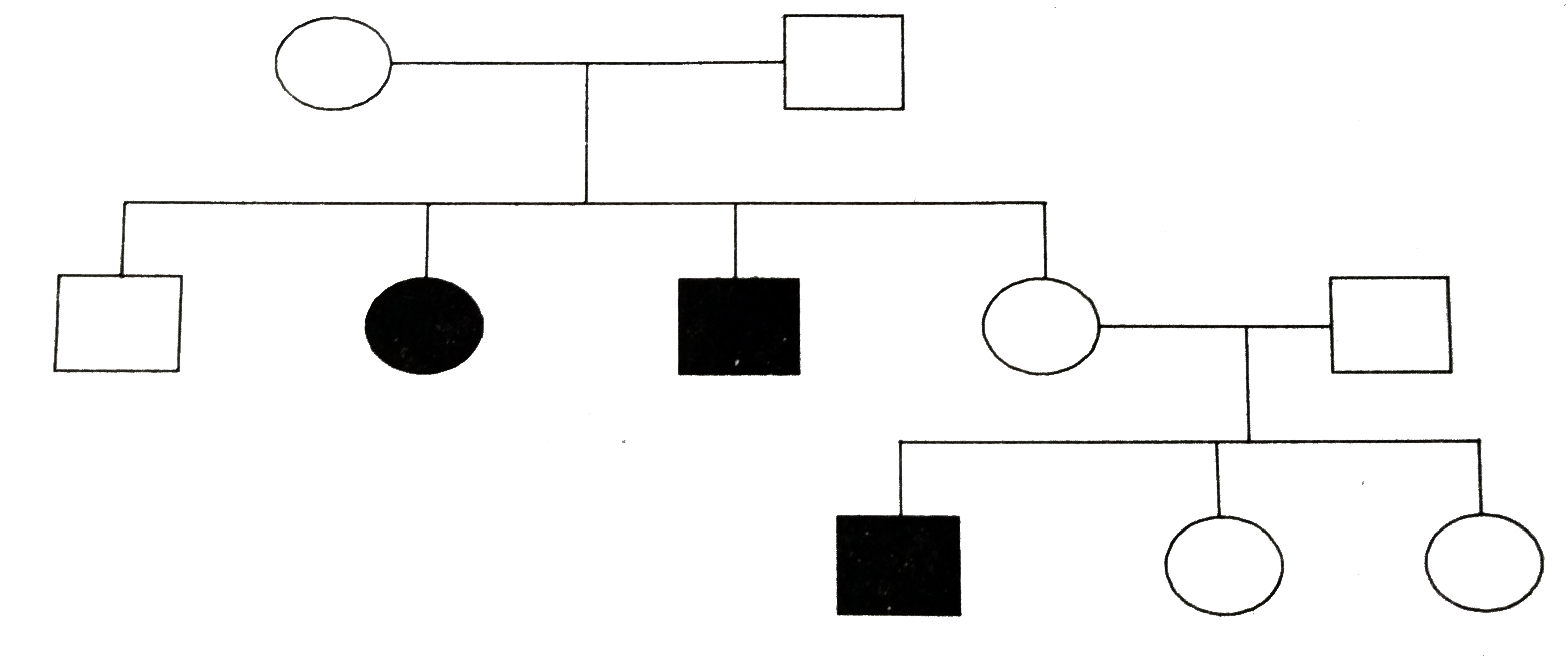
(a) In the trait recessive or dominant ?
(b) Is the trait sex-linked or autosomal ?
(c) Give the genotypes of the parants in generation I and of their third and fourth child in generation.
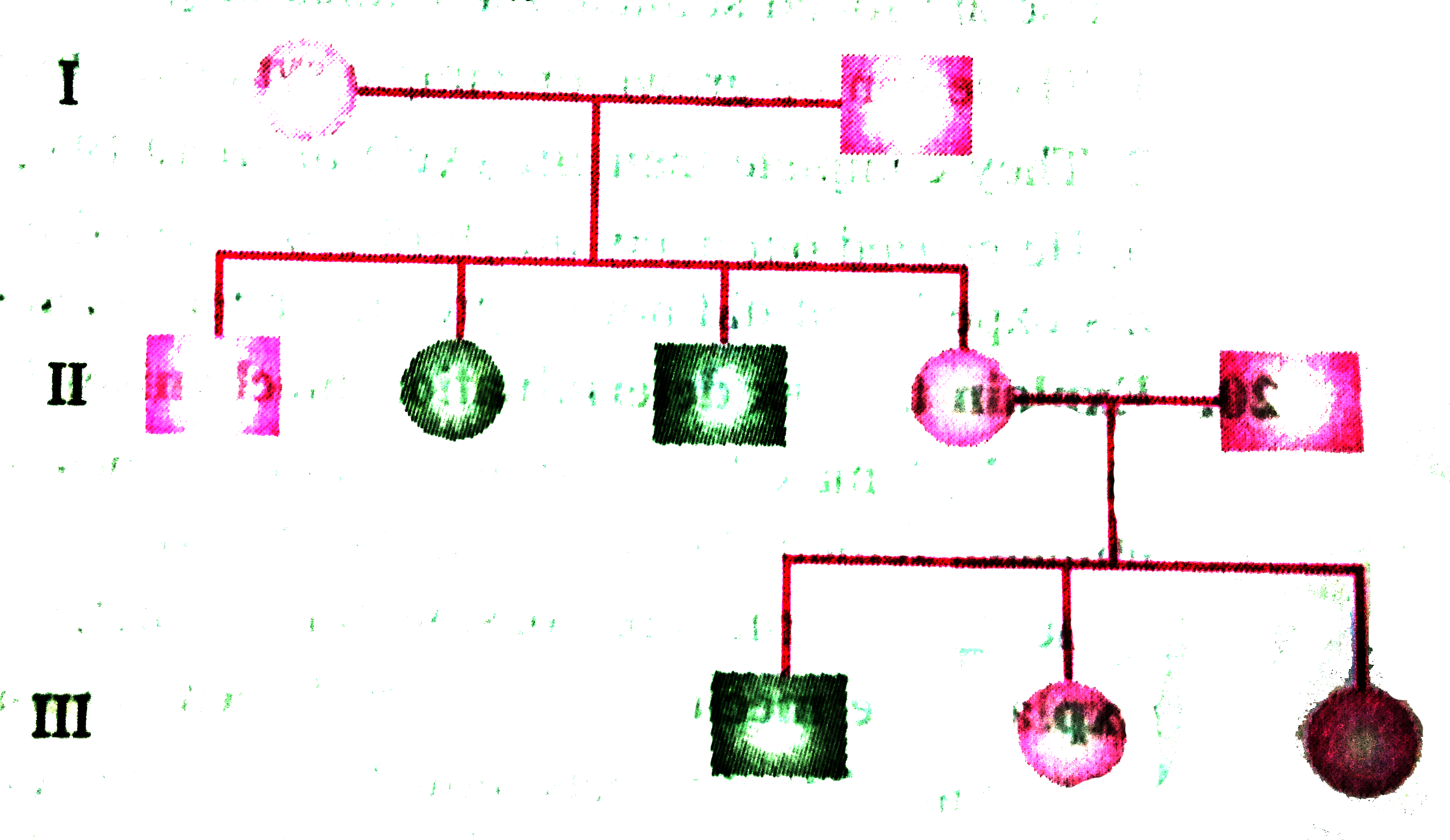
(a) The trait is recessive
(b) The trait is not sex-linked autosomal recessive trait (e.g.,Sickle cell anemia) ltbr> (c) Both parents of generation I are heterozygous (i.e.,HbAHbS) and carrier for the gene. The third child male and developed the trait so the genotype is homozygous recessive (i.e.,HbAHbS). The fourth child is female an d carrier for the ene. Therefore, the genotype of fourth child is heterozygous (i.e.,HbAHbS)
Topper's Solved these Questions
- BOOK - PRADEEPCHAPTER - PRINCIPLES OF INHERITANCE AND VARIATION EXERCISE - NCERT EXERCISES ADDITIONAL QUESTIONS (LONG ANSWER QUESTIONS)48videos
PRINCIPLES OF INHERITANCE AND VARIATION
- BOOK - PRADEEPCHAPTER - PRINCIPLES OF INHERITANCE AND VARIATION EXERCISE - ANALYTICAL (QUESTIONS WITH ANSWERS)20videos
PRINCIPLES OF INHERITANCE AND VARIATION
- BOOK - PRADEEPCHAPTER - PRINCIPLES OF INHERITANCE AND VARIATION EXERCISE - NCERT EXERCISES ADDITIONAL QUESTIONS (VERY SHORT ANSWER QUESTION )50videos
PRINCIPLES OF INHERITANCE AND VARIATION
- BOOK - PRADEEPCHAPTER - ORGANISMS AND POPULATIONS EXERCISE - Practice Questions (II. Assertion - Reason Type Questions)18videos
ORGANISMS AND POPULATIONS
- BOOK - PRADEEPCHAPTER - REPRODUCTION IN ORGANISMSEXERCISE - PRACTICE QUESTIONS (ASSERTION- REASON TYPE QUESTIONS II)7videos
REPRODUCTION IN ORGANISMS
Similar Questions
Study the given pedigree chart and answer the queation that follow.

(a) In the trait recessive or dominant ?
(b) Is the trait sex-linked or autosomal ?
(c) Give the genotypes of the parants in generation I and of their third and fourth child in generation.View SolutionStudy the given pedigree chart and answer the questions that follow
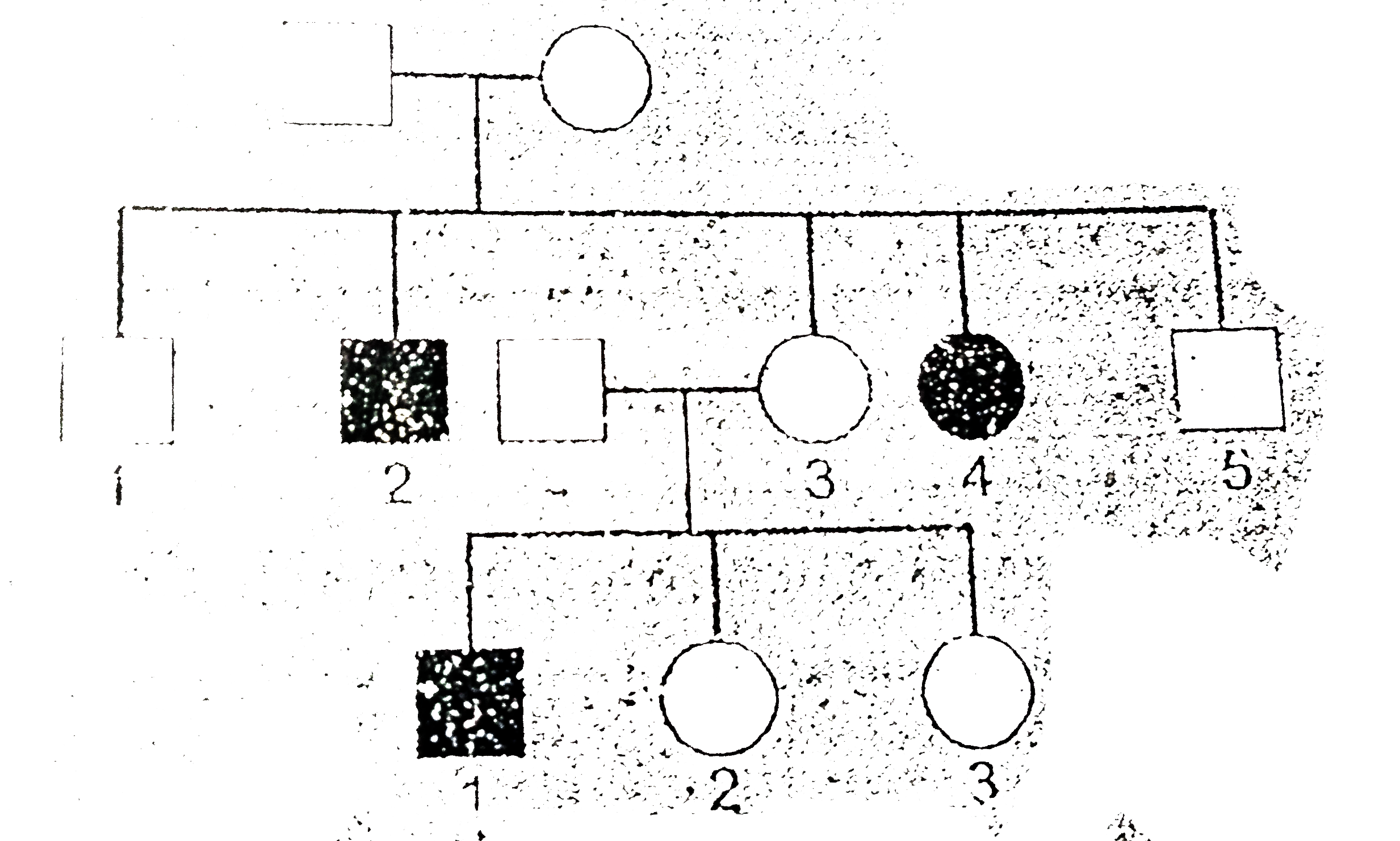
(i) Trait is autosomal recessive (True/False)
(ii) Give the genotype of the members 3 and 4.View Solution
Knowledge Check
- Question 1 - Select One
Study the given pie chart and answer the question that follows.
Break-up of the students studying in schools A,B,C,D and E managed by a society, in 2019
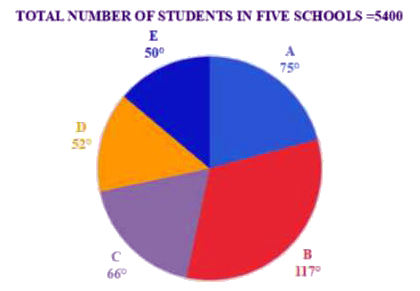
The average number of students in schools A,B and C is what percentage more than the number of students in school E ?A65%B60%C72%D70% - Question 2 - Select One
Study the given pedigree chart showing the inheritance if an X-linked trait controlled by gene 'r'
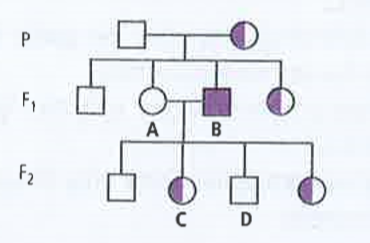
What will be the genotypes of individuals A,B,C and D respectively ?AXX,XrY,XrX,XYBXrXr,XY,XX,XYCXrX,XrYr,XrXr,XrYDXX,XrYr,XX,XY - Question 3 - Select One
From the pedigree of a family given below, it is clear that trait is inherited as dominant autosomal trait. What will the genotype mother and father?
AMother is aa and father is AaBFather is AA and mother is aaCFather is Aa and mother is AaDNone of the above
Study the given pie chart and answer the question that follows
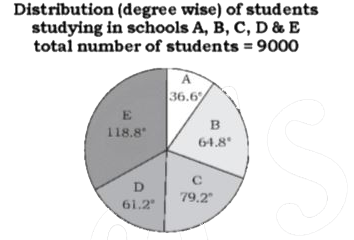
The total number of students in schools D and E is what percentage more than the number of students in schools B and C?View SolutionStudy the given pie chart and answer the question that follows
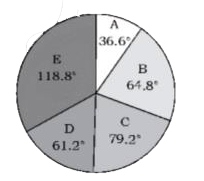
IF the ratio of the number of boys to that of girls in school C is 6:5 and that in school B is 7:11 then what is the ratio of the number of boys in school C to the number of girls in school BView SolutionStudy the given pedigree chart showing the pattern of blood group inheritance in a family
(a) Given the genotype of the following:
(i)Parents
(ii) The individual 'X' in second generation
(b) State the possible blood groups of the individual 'Y' in third generation
(c) How does the inheritance of this blood group explain codominance?
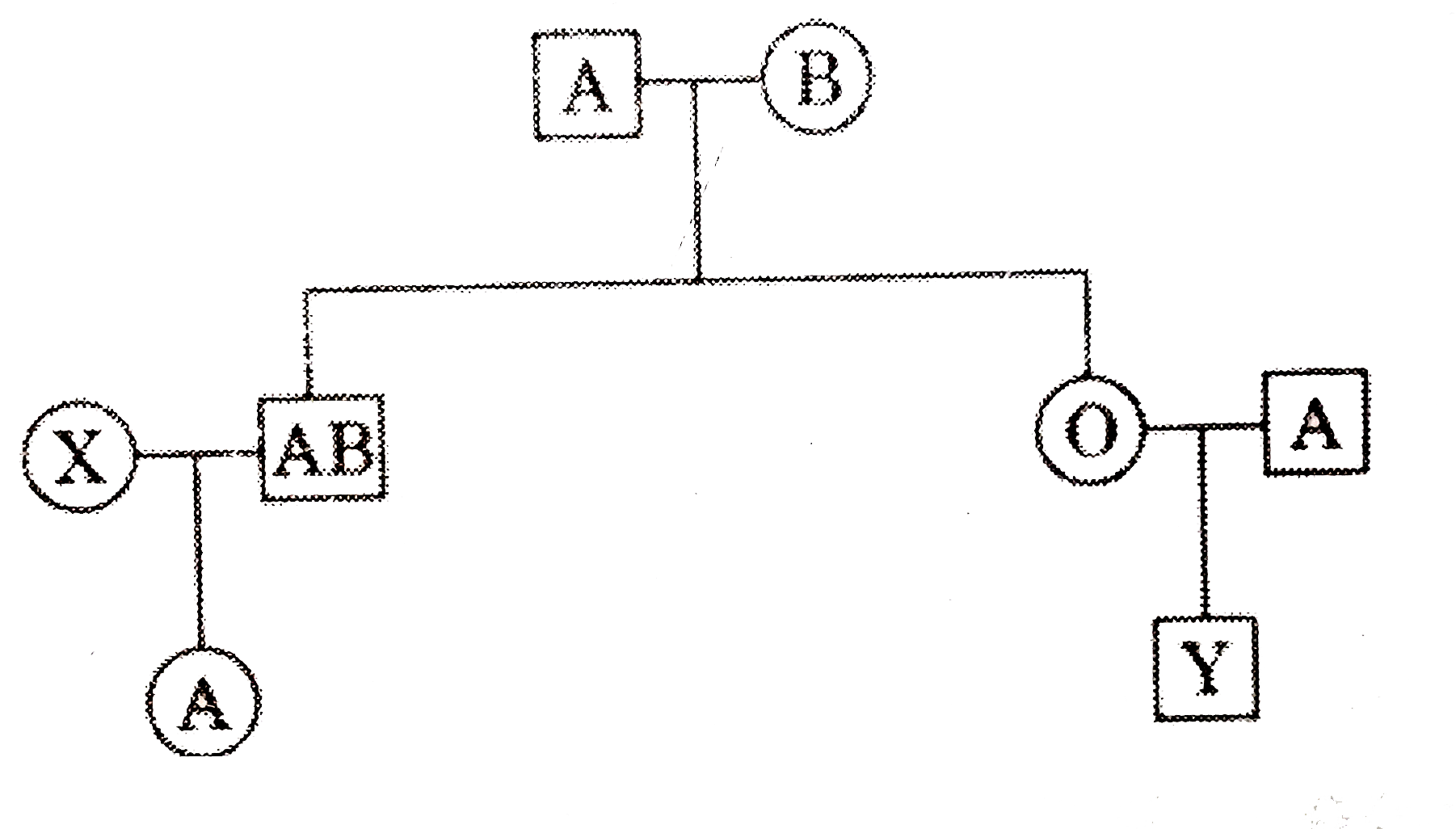 View Solution
View SolutionStudy the given figure carefully and answer the following questions :
(i) Label the Parts maeked as (a),(b) ,( C) ,(d) and €
(ii) give one major function of each partView SolutionThe following table gives the growth chart of a child.

Draw a line graph for the table and answer the questions that follow.
(a) What is the height at the age of 5 years?
(b) How much taller was the child at the age of 10 than at the age of 6 ?
(c) Between which two consecutive periods did the child grow more faster ?View Solution

